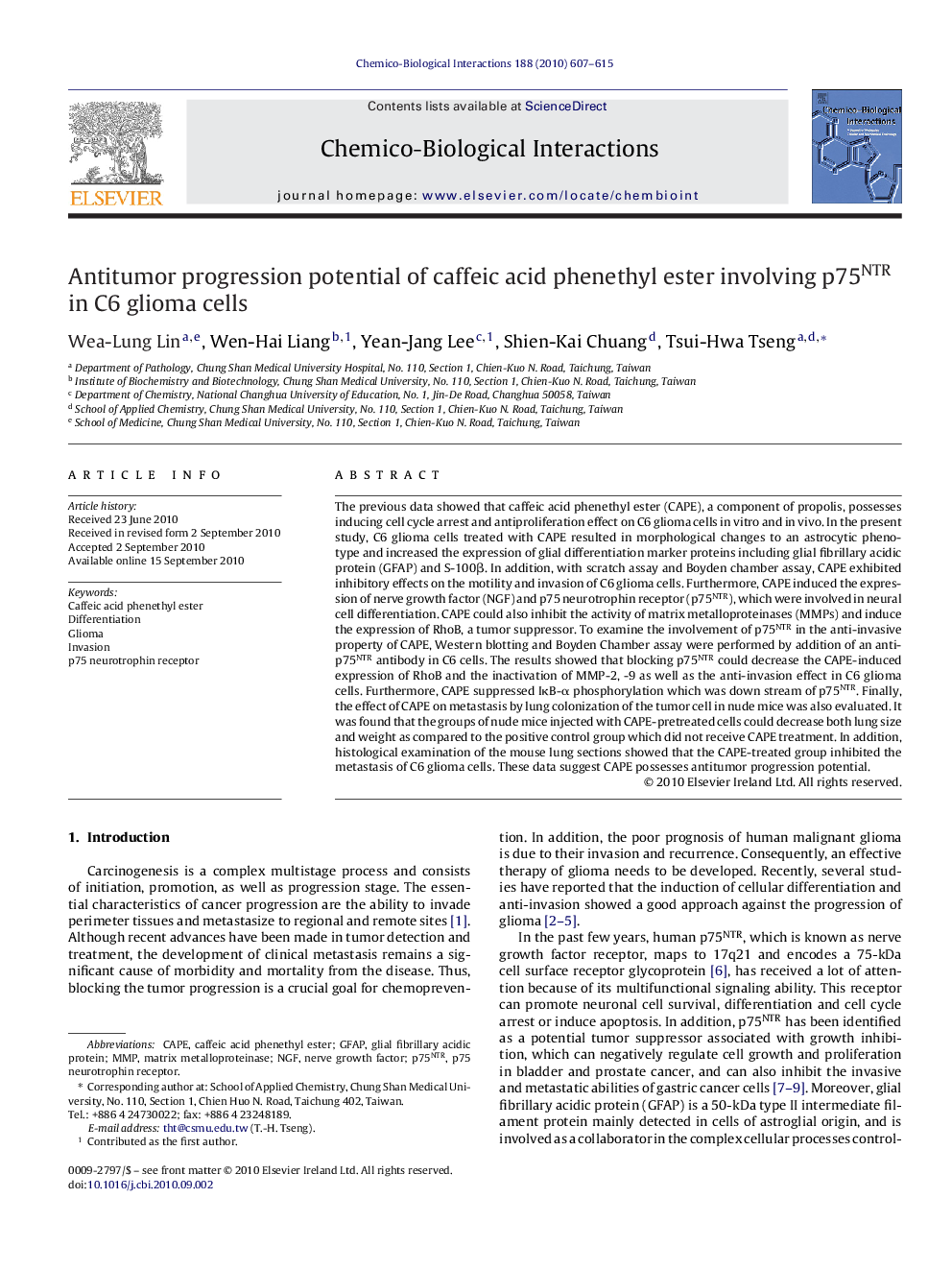| کد مقاله | کد نشریه | سال انتشار | مقاله انگلیسی | نسخه تمام متن |
|---|---|---|---|---|
| 2580970 | 1130167 | 2010 | 9 صفحه PDF | دانلود رایگان |

The previous data showed that caffeic acid phenethyl ester (CAPE), a component of propolis, possesses inducing cell cycle arrest and antiproliferation effect on C6 glioma cells in vitro and in vivo. In the present study, C6 glioma cells treated with CAPE resulted in morphological changes to an astrocytic phenotype and increased the expression of glial differentiation marker proteins including glial fibrillary acidic protein (GFAP) and S-100β. In addition, with scratch assay and Boyden chamber assay, CAPE exhibited inhibitory effects on the motility and invasion of C6 glioma cells. Furthermore, CAPE induced the expression of nerve growth factor (NGF) and p75 neurotrophin receptor (p75NTR), which were involved in neural cell differentiation. CAPE could also inhibit the activity of matrix metalloproteinases (MMPs) and induce the expression of RhoB, a tumor suppressor. To examine the involvement of p75NTR in the anti-invasive property of CAPE, Western blotting and Boyden Chamber assay were performed by addition of an anti-p75NTR antibody in C6 cells. The results showed that blocking p75NTR could decrease the CAPE-induced expression of RhoB and the inactivation of MMP-2, -9 as well as the anti-invasion effect in C6 glioma cells. Furthermore, CAPE suppressed IκB-α phosphorylation which was down stream of p75NTR. Finally, the effect of CAPE on metastasis by lung colonization of the tumor cell in nude mice was also evaluated. It was found that the groups of nude mice injected with CAPE-pretreated cells could decrease both lung size and weight as compared to the positive control group which did not receive CAPE treatment. In addition, histological examination of the mouse lung sections showed that the CAPE-treated group inhibited the metastasis of C6 glioma cells. These data suggest CAPE possesses antitumor progression potential.
Journal: Chemico-Biological Interactions - Volume 188, Issue 3, 5 December 2010, Pages 607–615